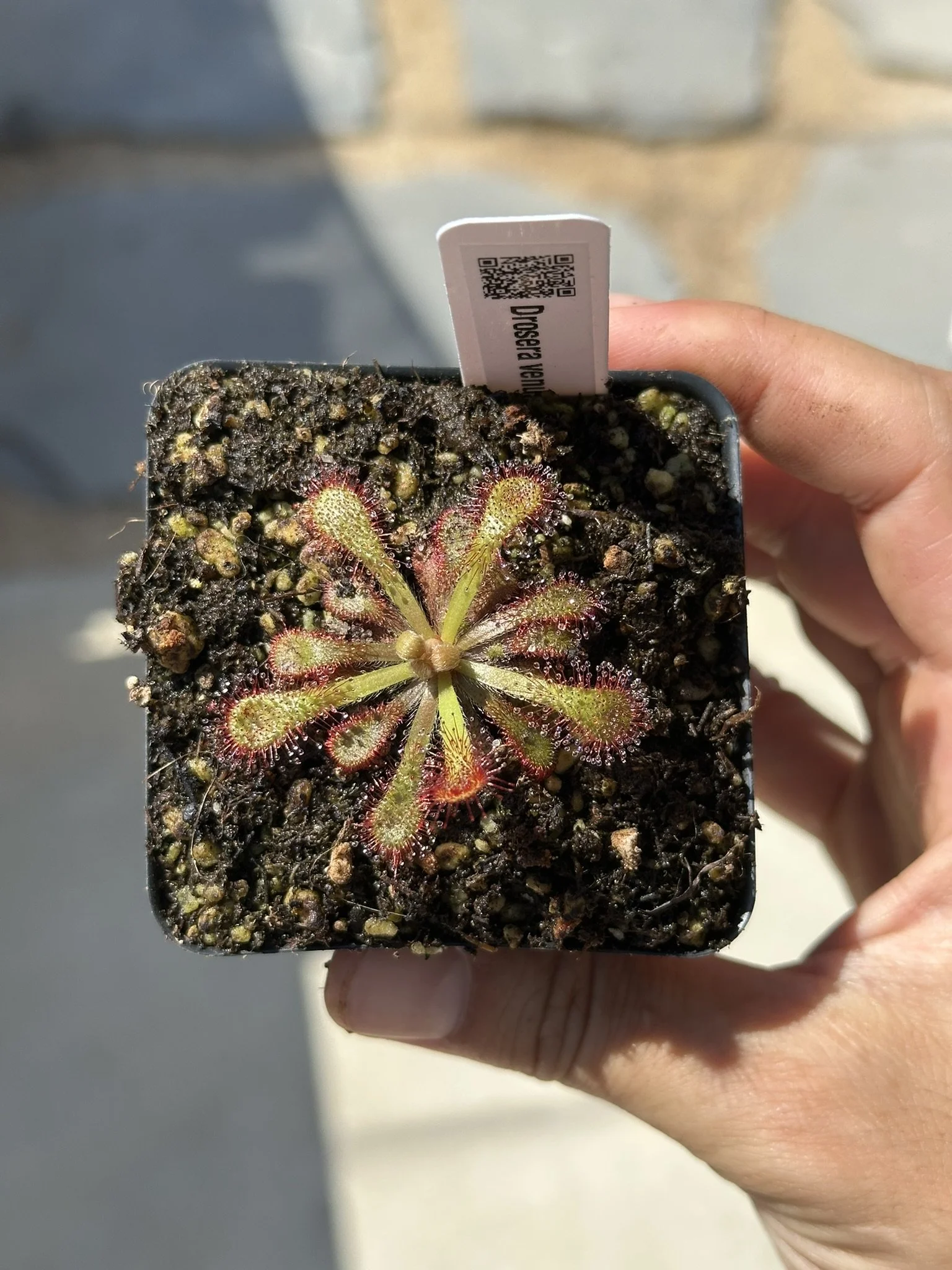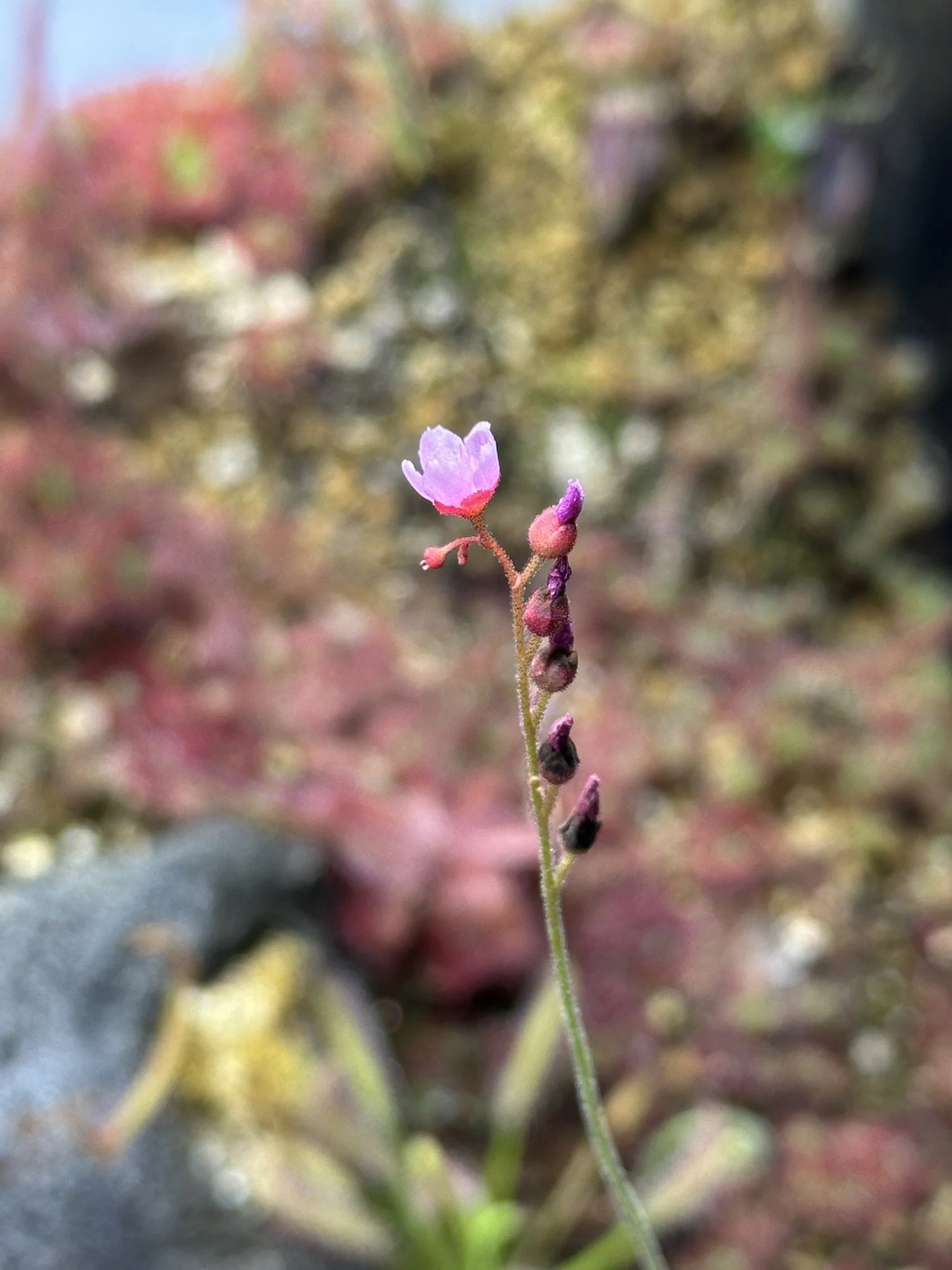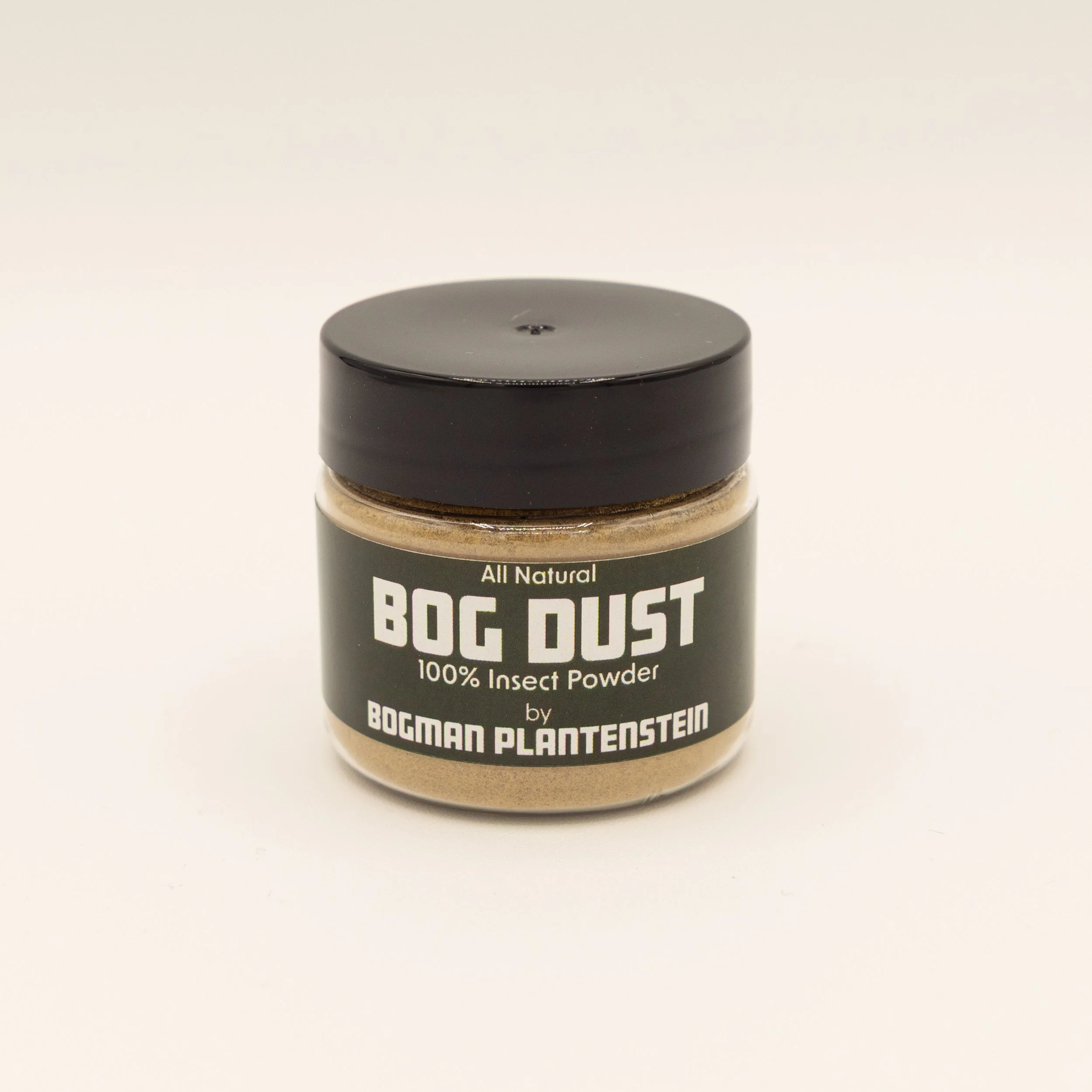 Image 1 of 5
Image 1 of 5

 Image 2 of 5
Image 2 of 5

 Image 3 of 5
Image 3 of 5

 Image 4 of 5
Image 4 of 5

 Image 5 of 5
Image 5 of 5






Drosera venusta
Description
Drosera venusta is a robust and beautiful rosetted sundew. It can grow to 3” in diameter with wide, lute-shaped leaves that attain an orange color with red tentacles. The flowers are borne on a tall stalk with pink petals and can self-pollinate to produce seed. Certainly one of the most beautiful rosetted sundews with the coloration and upward angle of new leaves.
Native to the Cape Provinces of South Africa, Drosera venusta grows well in subtropical conditions that are consistently wet. Some consider it to be a synonym of Drosera natalensis. Regardless, it it easy to grow and has a unique look that goes great in any collection.
Plants will be at least 1” in diameter potted in 2.5”W x 3.5”H pots.
WINTER SHIPPING: Cold winter temperatures (<40F) require heat packs which will be automatically included with the shipment if necessary.
Growing Information
Climate: Temperatures from 40-95F, all humidity levels.
Light: Part to Full Sun or 20W per sq ft LED light.
Water: Distilled or Reverse Osmosis water. Sitting in 0.5”-1” of water using tray method. Only use distilled, reverse osmosis, or rainwater because tap water is toxic to carnivorous plants due to high mineral content and chlorine.
Soil: 50% Peat Moss: 50% Perlite/Sand. Rinse media with distilled or reverse osmosis water to remove excess salts.
Feeding: Feed leaves with Insect Powder every month or so.
Description
Drosera venusta is a robust and beautiful rosetted sundew. It can grow to 3” in diameter with wide, lute-shaped leaves that attain an orange color with red tentacles. The flowers are borne on a tall stalk with pink petals and can self-pollinate to produce seed. Certainly one of the most beautiful rosetted sundews with the coloration and upward angle of new leaves.
Native to the Cape Provinces of South Africa, Drosera venusta grows well in subtropical conditions that are consistently wet. Some consider it to be a synonym of Drosera natalensis. Regardless, it it easy to grow and has a unique look that goes great in any collection.
Plants will be at least 1” in diameter potted in 2.5”W x 3.5”H pots.
WINTER SHIPPING: Cold winter temperatures (<40F) require heat packs which will be automatically included with the shipment if necessary.
Growing Information
Climate: Temperatures from 40-95F, all humidity levels.
Light: Part to Full Sun or 20W per sq ft LED light.
Water: Distilled or Reverse Osmosis water. Sitting in 0.5”-1” of water using tray method. Only use distilled, reverse osmosis, or rainwater because tap water is toxic to carnivorous plants due to high mineral content and chlorine.
Soil: 50% Peat Moss: 50% Perlite/Sand. Rinse media with distilled or reverse osmosis water to remove excess salts.
Feeding: Feed leaves with Insect Powder every month or so.


